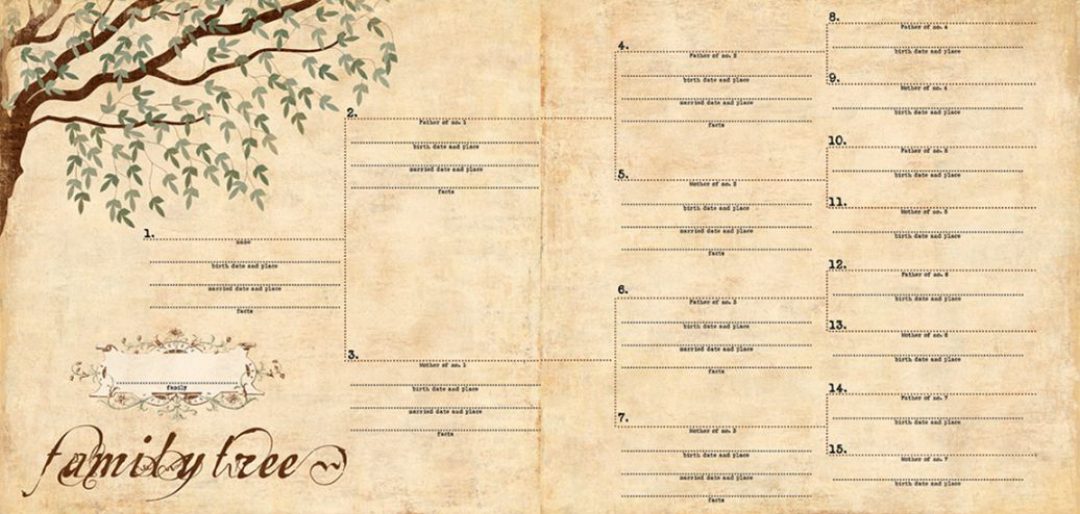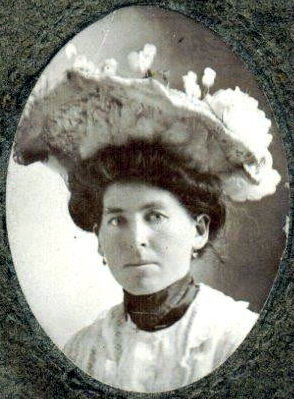Mary was born in Iowa, probably Des Moines County, June 10, 1874, to John Campbell and Annie Belle Rock. On February 10, 1883, Mary’s father was buying land in Kansas, 400 miles away, and in 1885 the family was living in Wilmington, Wabaunsee County, Kansas. Three years later, in 1888, Mary’s father died, leaving his wife, a 15 year old son John Knox, and Mary, age 13.
Mary’s brother, John Knox, was born in Des Moines County, Iowa on June 5, 1872. He married Frances Lottie Chelf, and they stayed in Kansas for many years, having at least three children. After the death of his wife, John moved to California where he died on December 18, 1951.
Apparently, not long after her father’s death, Mary met her future husband, Jeremiah ‘Jerry’ Gard, who was working in Kansas as a teamster. Jerry was more than twenty years older than Mary, and by the fall of 1889, Mary was expecting her first daughter, Anna Belle, who was born on June 23, 1890. Mary and Jerry were married the next month on July 23 in Harveyville.
Jerry was working as a farmer in Kansas, as he had in Ohio where he was from. Jerry was born probably in Tuscarawas County, July 17, 1851 to Levi Gard and Barbara Miller. When Jerry was 25, he married Mary D. Schamp in Holmes County, Ohio. He and Mary had a son Bert, born February 4, 1879, and a daughter Adaline, called Lena, born March 29, 1881. In 1886 Mary filed for divorce from Jerry, and in 1888 Jerry is living in Topeka, Kansas working as a teamster.
Family Farm in Kansas. L to R: John Knox Campbell, Annie Rock Campbell,
Anna Belle Gard, Mary Campbell Gard, Jerry Gard, circa 1893
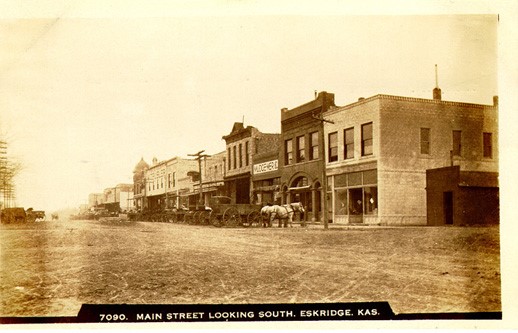
Eskridge in Wabaunsee County, Kansas circa 1890
Mary and Jerry lived in Wabaunsee County for many years, and they were still there in 1905. Mary’s mother Annie died on February 23, 1907, and not long afterwards, Mary and Jerry moved to Denver, Colorado. In 1909, the couple are not living together and Mary is working as a cook.
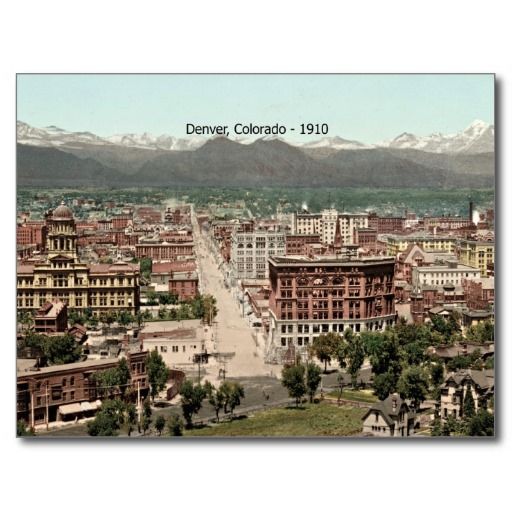
In 1910, Mary is working as the manager of a rooming house. In 1912 and 1913 she is working as a janitor in the A.C. Foster Building, and Mary, Jerry, and their second daughter Rose are living at 1207 California Street. Rose was born in Harveyville, on September 17, 1896.

Mary and Rose at Champa Street house in Denver.
In 1914 Mary is the proprietor of The Pennell, a boarding house where Rose and her first husband are living, and in October of that year, Mary filed for a divorce from Jerry. She states in her petition that she and Jerry had not lived together for many years and that Jerry had never given her any money for support even though Rose was only eleven years old when they moved to Denver. She says that she was “compelled to support herself by doing heavy manual labor beyond her means and strength in the business blocks and hotels of Denver…her health has been greatly damaged and impaired, thereby greatly incapacitating her in earning her livelihood.” Her petition goes on to say, “Numerous times throughout said marriage period and more frequently during the later years thereof, defendant was guilty of repeated acts and deeds of cruelty, causing plaintiff severe physical pain and great mental suffering, and seriously impaired her health.” Mary was granted her divorce in January of 1915 and Jerry was ordered to give Mary $25.00 a month in permanent alimony.
Mary’s mother was born in Monroe, Washington County, Indiana, on January 24, 1830 to Robert Rock and Nancy Gordon. Annie spent her childhood and early adulthood in Indiana.
When Annie was 26 she married William Gillespie and very soon had a son Johnny who didn’t live long. She had another son whom she named after his father. Sadly, her husband died after only one year of marriage, and before their second son was born. Annie was a widow for many years, raising William in Indiana. She had many siblings, and two of her sisters, Margaret and Susannah, married brothers Robert and Isaiah Tippin. The two couples moved from Indiana to Des Moines County, Iowa by 1856, a journey of about 425 miles.
By this time, all four of Annie’s grandparents were gone, and both of her parents and her husband were gone. It is no wonder that she followed her sisters and moved to Des Moines County, Iowa as well. On the 1870 census she is living in Yellow Springs with her son at dwelling number 48, and just down the road at dwelling number 54 is her future husband John Campbell, a Scots-Irish immigrant working as a farm hand for fellow Irish immigrants Thomas and Sarah Hawthorn. John had come to Iowa from New York, it is not known at this time what year he immigrated or how long he was in New York. He supposedly sailed out of Belfast. Annie’s Aunt Sarah Rock, together with her husband Thomas Stevenson, had also migrated to Yellow Springs, so Annie had several family members in the area.
As stated earlier, Annie and John moved from Iowa to Kansas by 1885. Annie’s brother John went to Missouri, her sister Margaret who had gone to Iowa moved on to Kansas, as did her brothers Robert and Samuel. Her sister Susannah, who had gone to Iowa, died in childbirth there on October 21, 1858.
William Gillespie, Mary’s half-brother, got married in Iowa on March 12, 1884 to Mary Alice Myers, and they had three children together. When his sister’s family moved from Iowa to Kansas, William stayed in Iowa, and was still there in 1905. On the 1910 census, William’s wife Mary Gillespie is living in Iowa with two of her children, and it says that she is divorced. In 1912, we find William living in Denver, on the same street as Mary just a few doors down. He is still living in Denver in 1930.
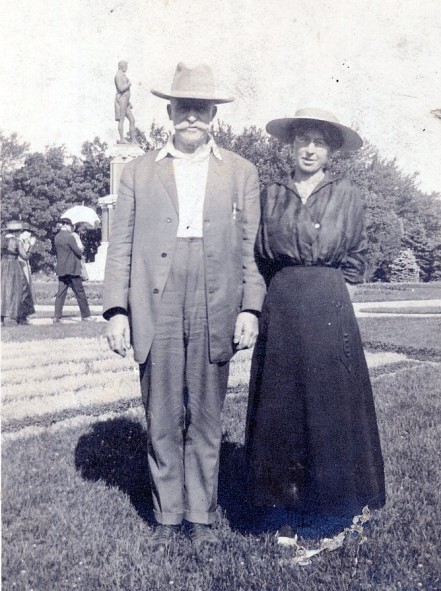
William Gillespie and Mary Gard circa 1912
All of Annie’s grandparents were Scots-Irish immigrants from Northern Ireland, possibly county Antrim, making her a first generation American. Her paternal grandparents were John Rock and Catherine McClellan, and her maternal grandparents were Aaron Gordon and Nancy Ann Sproul. The family were Covenanters who were a Scottish Presbyterian movement that played an important part in the history of Scotland, and to a lesser extent that of England and Ireland, during the 17th century. Covenanters started their migration to North America by way of Ireland.
Having come to Ireland for religious, economic, and political reasons throughout the 17th century, Scottish Presbyterians, including Covenanters, once again for religious, economic, and political reasons felt compelled to migrate again. In North America Covenanters became known as members of the Reformed Presbyterian Church. They were among the most vocal agitators for independence from Great Britain and volunteered in large numbers as soldiers in the revolutionary armies.
John Rock, known as Jack, was one such soldier. He was a private in Montfort’s Company, 10th North Carolina Regiment of the Continental Line, and there is a family story that he was in charge of George Washington’s supplies during the Revolutionary War. According to a great-granddaughter’s recollections, he fought in the Battle of Kings Mountain and “defended himself against three Tories single handed, killing all three of them with his own sword. His daughter Sarah told us often of how he walked home in the snow barefoot at the close of the War, his shoes were entirely gone.”
Jack Rock’s wife, Catherine McClellan, was thought by the family “to be on the same family tree as General McClellan of historic note.” They are talking about Samuel McClellan, a General in the Revolutionary War. His family went straight from Scotland to Massachusetts, so if there is a connection it must be back when the families were still in Scotland.
Getting back to Mary, her two daughters led full lives, Anna lived to be 95 years old and had two sons of her own. Rose was 91 when she died, and even though she had seven husbands over the years, she didn’t have any children. Anna’s boys A.J. and James were both born while Mary was alive, but she probably only got to see A.J. because Mary’s life was cut short when she died in Denver on April 3, 1918. She had contracted a serious bacterial infection and was sick with a life-threatening pneumonia. This particular infection later was linked to the influenza pandemic which killed thousands of people across the nation in 1918 and 1919. In her weakened physical state, she wasn’t able to fight it off. Mary was only 43 years old.
It is clear that Mary was a woman of strong character. She moved to Denver with two minor children and found work in the “business blocks and hotels” to support herself and her daughters. After both girls were married and on their own Mary hired a lawyer and filed for divorce. All of that took courage, guts and determination, and it would have been nice to know her in person.

Mary and Rose circa 1916

